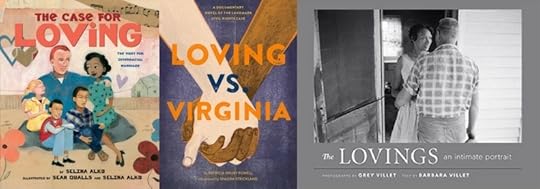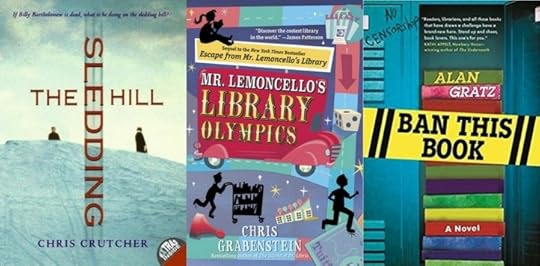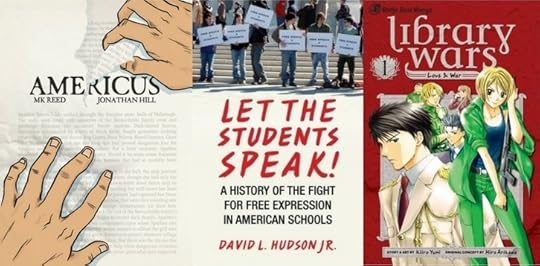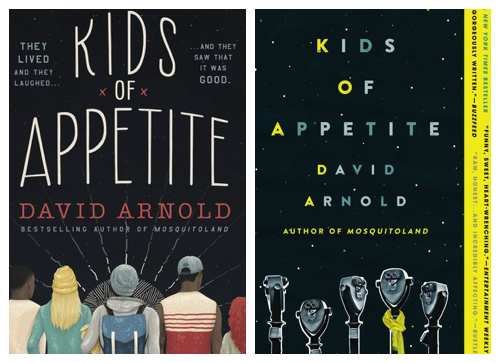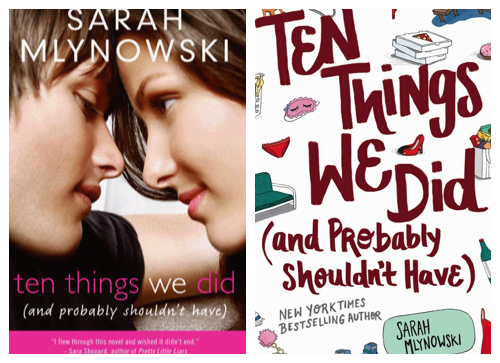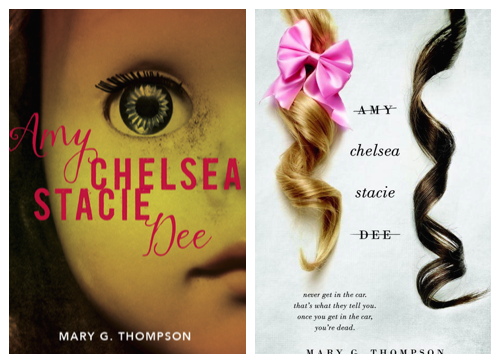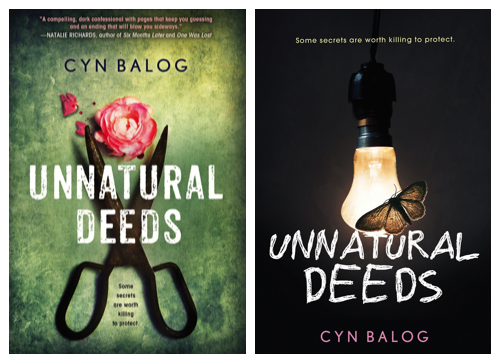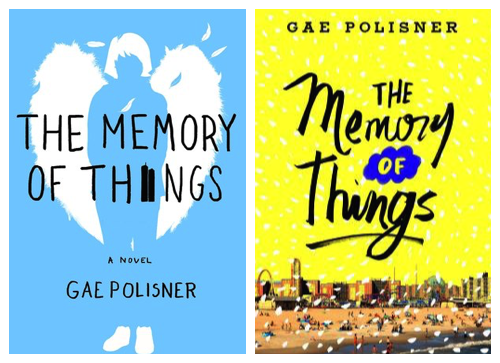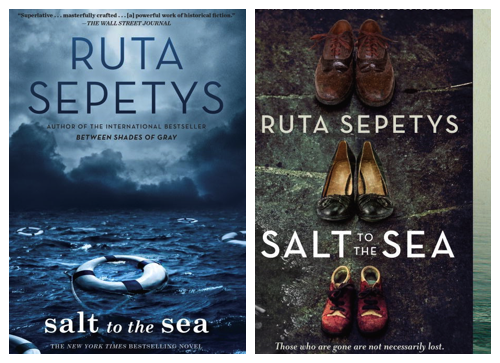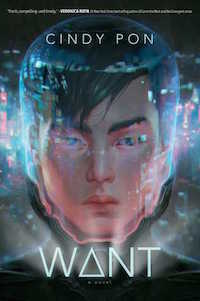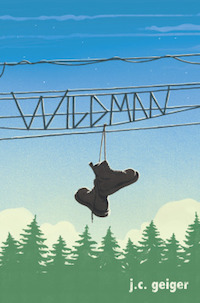Kelly Jensen's Blog, page 60
June 15, 2017
This Week at Book Riot
Over on Book Riot this week (and last, since I totally forgot to do this then):
YA paperbacks hitting shelves this summer.
Some excellent diverse YA covers you should get excited about.
Did you know there are enough YA book titles with a day of the week in them to cover all 7 days? Well, kinda. One of these is a stretch.
Elsewhere on the internet, it was nice to see this fabulous review of Here We Are: Feminism For The Real World on Cleaver Magazine.
June 14, 2017
Monthly Giving: ACLU
Monday was the fiftieth anniversary of Loving v. Virginia, the landmark Supreme Court case that struck down laws prohibiting interracial marriage. Almost fifty years later, in 2015, the Supreme Court cited this case, among others, in its Obergefell v. Hodges decision, which struck down laws prohibiting same sex marriage. The Lovings’ story continues to reverberate.
Kelly and I have given to the American Civil Liberties Union (ACLU) jointly before, but I’ve never given to them as part of my Monthly Giving campaign here at Stacked. They represented the Lovings in their case before the Supreme Court, and they continue to fight for our civil rights today. In the wake of the November 2016 presidential election, membership in the ACLU spiked dramatically, and donations continue to pour in. There are many worthy organizations out there, but few are so broad in scope and so effective in results as the ACLU.
The book list below is a combination of titles about Loving v. Virginia and titles about kids and teens fighting censorship and for their right to free speech – the initial reason the ACLU was founded in 1920. Descriptions are from Goodreads.
The Case for Loving: The Fight for Interracial Marriage by Selina Alko
This is the story of one brave family: Mildred Loving, Richard Perry Loving, and their three children. It is the story of how Mildred and Richard fell in love and got married in Washington, D.C. But when they moved back to their hometown in Virginia, they were arrested (in dramatic fashion) for violating that state’s laws against interracial marriage. The Lovings refused to allow their children to get the message that their parents’ love was wrong and so they fought the unfair law, taking their case all the way to the Supreme Court – and won!
Loving vs. Virginia: A Documentary Novel of the Landmark Civil Rights Case by Patricia Hruby Powell
From acclaimed author Patricia Hruby Powell comes the story of a landmark civil rights case, told in spare and gorgeous verse. In 1955, in Caroline County, Virginia, amidst segregation and prejudice, injustice and cruelty, two teenagers fell in love. Their life together broke the law, but their determination would change it. Richard and Mildred Loving were at the heart of a Supreme Court case that legalized marriage between races, and a story of the devoted couple who faced discrimination, fought it, and won.
The Lovings: An Intimate Portrait by Grey Villet and Barbara Villet
Mildred, a woman of African American and Native American descent and Richard, a white man, were arrested in July 1958 for the crime of interracial marriage, prohibited under Virginia state law. Exiled to Washington, DC, they fought to bring their case to the US Supreme Court. Knowledge of their struggle spread across the nation, and in the spring of 1965, the Life magazine photojournalist Villet spent a few weeks documenting the Lovings and their family and friends as they went about their lives in the midst of their trial.
The Lovings presents Grey Villet’s stunning photo-essay in its entirety for the first time and reveals with striking intensity and clarity the powerful bond of a couple that helped change history.
The Sledding Hill by Chris Crutcher
Billy, recently deceased, keeps an eye on his best friend, fourteen-year-old Eddie, who has added to his home and school problems by becoming mute, and helps him stand up to a conservative minister and English teacher who is orchestrating a censorship challenge.
Mr. Lemoncello’s Library Olympics by Chris Grabenstein
Welcome, boys and girls, readers of all ages, to the first-ever Library Olympiad! Kyle and his teammates are back, and the world-famous game maker, Luigi Lemoncello, is at it again!
This time Mr. Lemoncello has invited teams from all across America to compete in the first ever LIBRARY OLYMPICS. Will it be fun? Like the commercials say. . . HELLO? It’s a Lemoncello! But something suspicious is going on . . . books are missing from Mr. Lemoncello’s library. Is someone trying to CENSOR what the kids are reading?! In between figuring out mind-boggling challenges, the kids will have to band together to get to the bottom of this mystery.
Now it’s not just a game—can Mr. Lemoncello find the real defenders of books and champions of libraries?
Ban This Book by Alan Gratz
It all started the day Amy Anne Ollinger tried to check out her favorite book in the whole world, From the Mixed-Up Files of Mrs. Basil E. Frankweiler, from the school library. That’s when Mrs. Jones, the librarian, told her the bad news: her favorite book was banned! All because a classmate’s mom thought the book wasn’t appropriate for kids to read.
Amy Anne decides to fight back by starting a secret banned books library out of her locker. Soon, she finds herself on the front line of an unexpected battle over book banning, censorship, and who has the right to decide what she and her fellow students can read.
Americus by MK Reed and Jonathan Hill
Neal Barton just wants to read in peace. Unluckily for him, some local Christian activists are trying to get his favorite fantasy series banned from the Americus public library on grounds of immoral content and heresy. Something has to be done, and it looks like quiet, shy Neal is going to have to do it. With youth services librarian Charlotte Murphy at his back, Neal finds himself leading the charge to defend the mega-bestselling fantasy series that makes his life worth living.
Let the Students Speak!: A History of the Fight for Free Expression in American Schools by David L. Hudson Jr.
Let the Students Speak! details the rich history and growth of the First Amendment in public schools, from the early nineteenth-century’s failed student free-expression claims to the development of protection for students by the U.S. Supreme Court. David Hudson brings this history vividly alive by drawing from interviews with key student litigants in famous cases, including John Tinker of Tinker v. Des Moines Independent School District and Joe Frederick of the “Bong Hits 4 Jesus” case, Morse v. Frederick.
He goes on to discuss the raging free-speech controversies in public schools today, including dress codes and uniforms, cyberbullying, and the regulation of any violent-themed expression in a post-Columbine and Virginia Tech environment.
Library Wars: Love & War by Kiiro Yumi
In the near future, the federal government creates a committee to rid society of books it deems unsuitable. The libraries vow to protect their collections, and with the help of local governments, form a military group to defend themselves–the Library Forces!
Iku Kasahara has dreamed of joining the Library Defense Force ever since one of its soldiers stepped in to protect her favorite book from being confiscated in a bookstore when she was younger. But now that she’s finally a recruit, she’s finding her dream job to be a bit of a nightmare. Especially since her hard-hearted drill instructor seems to have it in for her!
June 11, 2017
YA Hardcover to Paperback Makeovers: Six to Consider
It’s been a minute since I’ve done a look at YA book cover changes. For some reason, I keep a massive list of them but can forget to actually write about them when I’m working on posts. Alas, I’ve put together two at once — the one here and one for next month — and hope to continue highlighting these with more frequency because I love looking and thinking about YA book covers.
As usual, some of these changes are great and others are less so. I’d say on the whole, this round falls a little more into the “less so” category for me, but I suspect some of you might feel differently. As always, I’d love to hear what you think, which covers you prefer, and what cover changes you’ve seen lately that have caused you to pause and think.
Original covers in this round-up are on the left, with the redesigns on the right.
Kids of Appetite kicks off this round of cover changes and I have to be honest: I dislike both covers. Quite a bit, in fact. The hardcover looks to me like it’s not only trying too hard, but also that it’s doing too much. The text takes up a significant amount of real estate, and a good portion of that is a tag line that doesn’t seem to add much. I’ve never been a huge fan of illustrate covers, and this one is no exception. As nice as it is to see an inclusive illustration, none of the characters have any personality since we’re only able to see their backs.
The paperback takes what the hardcover did and turned the kids into telescopes. One of them even has on a scarf which kills me. It’s trying so hard to be clever and literary. More, the paperback redesign takes on a new trend from this particular paperback imprint that I’ve not been fond of: it’s making the paperback cover into two pieces, wherein the design is on top, with an underlaid cover that has praise all over it (in redesigns like the one for Jeff Zentner’s The Serpent King or Jandy Nelson’s I’ll Give You The Sun, one of those cover pieces is simply a quote from inside the book, which literally tells you nothing about the book). These kinds of choices scream adult audience, serious literary business. And if that’s the angle, then it’s succeeding, but….it’s not a YA look. What the paperback does have going for it, though, is the lessening of text. The title and author look much better on this one. It’s also interesting that they not only cut the tag line, but they also got rid of “bestselling” before “author of Mosquitoland.”
Neither of these covers really does it for me. If I had to pick one, though, I’d likely go hardcover, if for no reason other than it features at least two teens of color on it.
Kids of Appetite by David Arnold will be available in paperback on September 5.
The original cover for Sarah Mlynowski’s Ten Things We Did (And Probably Shouldn’t Have) came at the same time we got the original cover for Siobhan Vivian’s Not That Kind of Girl. They feature the same couple in slightly different positions. Back in those olden days of YA in 2011, covers with people on them were all the rage. On the right, though, we have a brand new edition of Mlynowski’s title in paperback that seems to follow the conventions of 2017 design: illustrated and, as I’ve noticed in a number of “lighter” YA titles, totally covered in stuff. See, for example, Lauren Strasnik’s 16 Ways to Break a Heart. Maybe it’s the color choice, but the new Ten Things cover looks really middle grade leaning to me, despite the fact the cover does feature a wine bottle, red underwear, and other items that one wouldn’t associate with middle graders. It is also certainly not a middle grade read in terms of content.
This is a tough one for me, since I don’t especially care for either of the covers. It is interesting to note that the new design denotes that Mlynowski is a New York Times Bestselling author, whereas the original hardcover has a blurb from Sara Shepard. Neither of the covers really do much for what the book is about; I almost wish that the Strasnik design scheme was what we saw for this particular cover, as that might make it feel more appropriate or appealing.
Ten Things We Did hit paperback in its new look June 6.
How about before saying anything about these covers, we pause and just appreciate how different the stories these covers are telling? And yet, what I love about both of them, is they both convey a sense of something Not Good happening. Amy Chelsea Stacie Dee in hardcover looks like a pretty solid horror novel. The doll face is creepy, and it’s made even creepier by the dirt splotches on the doll’s face. The title fonts work pretty well, too, as they’re sparse and it’s really the face of the doll which stands out on the cover. As someone who likes scary, this cover would be enough to make me pick it up.
The paperback edition, though, is also pretty damn good. I think that maybe the hair strands on covers could become cliche very quickly (there’s at least two others that I know of for 2017 alone, including the new E. Lockhart) but on this cover, it certainly does something interesting in conveying the idea this book might be more thriller than horror. The color differences on the hair locks is notable, as is the small pink bow. Like with the original hardcover, there’s a careful use of fonts with the title, wherein both “Amy” and “Dee” are in the same design and “Chelsea” and “Stacie” are in an alternate font. What I don’t like about this cover, though, is the use of the tag line. I think the effect of the cover is lost a bit in there being too much text on it now. Were it gone, the starkness would speak volumes.
Each cover tells a different story about the feel of the book — the one on the left is certainly horror, whereas the one on the right conveys thriller or mystery. I think both work, though as someone who hasn’t read this book, it’s challenging to discern which one is more fitting for the story. But in considering which might make me pick up the book….both actually would catch my eye enough. Perhaps the one on the right is geared a little more toward adult readers than teen readers, but it’s hard to say.
The paperback for Mary G. Thompson’s Amy Chelsea Stacie Dee will hit shelves October 3. It might hit my own TBR a little sooner than that.
Unlike the previous set of covers, I don’t necessarily think the design change for Unnatural Deeds by Cyn Balog offers up anything different. The two images are even almost exactly the same in where they’ve been placed on the cover: dead center. On the original hardcover, we have a pair of scissors cutting a flower, while on the right, we have a take on the “moth to a flame” cliche (just, you know, a butterfly to a lightbulb without any shade on it). The font on both covers feels somewhat uncreative, and it bothers my eyes a bit that the paperback font is not an even size between “Unnatural” and “Deeds.” I also find the fact that part of the word “Unnatural” actually clips the lightbulb to be bothersome. Or maybe it’s the fact that it looks like the lightbulb was slightly altered to allow the title to fit?
An interesting difference between the two: we lost the blurb on the paperback edition. Both still feature the tag line — and neither image really captures the idea of needing to kill to protect. In a lot of ways, these feel like safe images for what sounds like a murder-y type read. Although the cliched nature of the paperback bothers me, there’s something about the black background that works much better than the odd, bottom-of-the-river green on the hardcover.
I can’t say I love either of these nor feel they’re particularly fresh. That said, I suspect teen readers might feel differently, especially those who know what kinds of covers to look for for the types of books they love to read. What’s cliche to me as an adult can, and does, often not feel that way to teens, in part because they haven’t seen it enough to be tired by it. If I had to pick one cover doing it a bit better, I’d go with the new paperback, though I really hope that title font gets fixed. Kirkus called this a “PG-13 version of Gone Girl” and I think we get that more with the paperback, too.
Unnatural Deeds will hit paperback on November 1.
I don’t think I have a cover change I like more in this round-up than this one. Gae Polisner’s The Memory of Things is a 9/11 themed YA novel, and the hardcover made that super clear. The “I” in the title there was masked as the Twin Towers, kind of, if the Twin Towers were uneven in their size. The color of the original was a bright baby blue, and the image in the background of a white angel absolutely popped. But, aside from the small use of the Towers in the title font, the cover didn’t say much other than maybe it’s a book about angels. Despite having enjoyed Polisner’s previous books, there was nothing about this cover that really spoke to me, other than appreciating that it’s pretty sparse.
It’s interesting how much a YA book cover not filled with blurbs or tag lines can stand out for that alone.
The paperback edition of the novel doesn’t make the 9/11 connection clear, and in a lot of ways, that’s of service to the book. The yellow color pops and is fresh, and the image we see is that of a cityscape. As a non-New Yorker, this image doesn’t exactly place me in that city, though it does place me in A city; I think this is a hugely positive thing, as it will appeal to a larger range of readers who, like me, can tire of the same New York City story (I tend to think sometimes New York City publishing forgets that not everyone cares about NYC….growing up, all anyone ever wanted to do in my town was get to Chicago, and though we’re seeing more Chicago-set books now, they’re still few and far between). The almost generic feel of the city here, though, works really well, and I appreciate how the color and saturation of the image actually work against the yellow background. More, that font! The font itself tells a story in a way that the original didn’t. Like the hardcover, the paperback is clean, clear of extra text, and I think it literally pops from the screen and will pop from shelves.
No question, the paperback is the big winner here for me. It hits shelves on August 29.
Finally, here’s the paperback makeover for Ruta Sepetys’s Salt To The Sea. The original cover tells a pretty powerful story. It’s clear, at least to me, this is a historical fiction read, and there’s something to be a big element of survival to it. The color saturation and the lines in the image itself are powerful. It has a cold feeling to it, and there’s always something neat about a book cover that makes you feel a sensation just by looking at it.
What the original cover has that’s kind of annoying: so much text. Not only do we have the blurb from the Wall Street Journal review, we have a note that it’s by an international bestselling author of another book and that the book itself is a New York Times Bestselling novel. Do teen readers care? I don’t think that they read those blurbs and are suddenly moved to pick up the book. But alas, I’m curious about how much the teen appeal is in consideration.
I say that because the paperback book is not, at least in my mind, for teen readers. The cover is very adult historical fiction, and it also tells absolutely no story except that there might be people who died, as represented by shoes. I think the tag line also conveys that, and it’s a tag line that isn’t on the original hardcover. But at least we lost the other text in this rendition.
As noted before, notice how the paperback edition of this book is two-fold: there’s the cover, and then there’s a bigger cover beneath it, like with Kids of Appetite. This isn’t a particularly library friendly style, though it is a style that really screams Literary Fiction Adults Will Like. In this case, we lose the cool of the blue water and we now have a green hue to it. Though it is, without question, a pretty and appealing cover, it doesn’t tell nearly the story the hardcover does. Nor, do I think, does it care about reaching teen readers. None of those shoes even look like they’d belong to a teen (we have children’s shoes, as well as what appear to be a pair of shoes from an adult couple).
Hands down, for me, the hardcover does it better. I wish it had about half the text it has on it, but it gives so much more feeling and emotion, and I think it appeals far more to the audience for whom it was published (if YA is for teens, of course, which is in and of itself a debatable suggestion).
Salt To The Sea hits paperback on August 1. Interestingly, as I looked up the pub date on Amazon for this one, it was quoted as being great for readers who loved All The Light We Cannot See…another adult-aimed read.
June 6, 2017
“What If” and Choices in SF: Version Control by Dexter Palmer and Dark Matter by Blake Crouch
I’ve been on an adult science fiction kick lately, seeking out the hottest and best recent standalone titles. Monica Byrne’s The Girl in the Road kicked it off earlier in the year, and since then, I’ve been craving more of the same. Two titles – Version Control by Dexter Palmer and Dark Matter by Blake Crouch – have helped sate this craving. Fortunately for me, not only are they well-written and exciting science fiction, they also feature two interlinking tropes that I can’t get enough of: time travel and parallel worlds.
 In Version Control, physicist Philip Steiner has been working on a Causality Violation Device for the past decade. This is really a fancy phrase for time machine, but he hates it when anyone calls it that. A time machine is fiction; the CVD is real. Or it would be, if it worked. He and his assistants are on test number three hundred something and the result is always the same: nothing. On the surface, Palmer’s novel is about Steiner, his wife Rebecca Wright, Steiner’s lab assistants (also respected scientists), and Rebecca’s best friend Kate. It traces Rebecca and Philip’s meeting and marriage, their respective jobs (Rebecca works for the dating site where she met Philip), their relationships with their friends, and the fallout from Philip’s obsession with the CVD. Perspective shifts at times between all of these characters, though it focuses mainly on Rebecca (with Philip a close second), and much of the novel seems to be a story of a marriage that is falling apart. As the novel progresses, it becomes clear that Rebecca and Philip suffered a tragedy a few years ago, one they haven’t really recovered from.
In Version Control, physicist Philip Steiner has been working on a Causality Violation Device for the past decade. This is really a fancy phrase for time machine, but he hates it when anyone calls it that. A time machine is fiction; the CVD is real. Or it would be, if it worked. He and his assistants are on test number three hundred something and the result is always the same: nothing. On the surface, Palmer’s novel is about Steiner, his wife Rebecca Wright, Steiner’s lab assistants (also respected scientists), and Rebecca’s best friend Kate. It traces Rebecca and Philip’s meeting and marriage, their respective jobs (Rebecca works for the dating site where she met Philip), their relationships with their friends, and the fallout from Philip’s obsession with the CVD. Perspective shifts at times between all of these characters, though it focuses mainly on Rebecca (with Philip a close second), and much of the novel seems to be a story of a marriage that is falling apart. As the novel progresses, it becomes clear that Rebecca and Philip suffered a tragedy a few years ago, one they haven’t really recovered from.
But this is science fiction, so that isn’t the whole story. From the beginning, readers will notice small details that are different about the world Rebecca and Philip inhabit. It’s the present-day, but self-driving cars are ubiquitous. The president will pop up on people’s electronic devices every so often, addressing them by name and complimenting them on a particular detail of their dress, for example. It’s…weird. Off-putting. Intriguing. Rebecca has a general feeling that something isn’t quite right, and when others start to feel this too, psychologists put it down to a side effect of the overuse of technology like smartphones. But because this is a science fiction novel, readers will know right away it has something to do with the Causality Violation Device, that folly of Philip’s that has never shown any evidence of actually working.
Palmer’s novel is clever in many ways. It’s divided into three parts, each more intriguing than the last. The finale is elegantly perfect, reasonable in context of the “physics” Palmer has created for his story, and satisfying in a story sense as well. In fact, I wish I knew some people who had read this so I could discuss the ending with them and just how perfect it is. His version of time travel is also fascinating, different from any other kind of time travel I’ve read about before in fiction.
The book is a big self-indulgent at times. It’s long and wanders down a few paths that aren’t strictly essential to the main plot, like the world of online dating. But in Palmer’s capable hands, these lengthy asides are fascinating, and they lend further insight into this world that is just barely wrong. He tackles casual sexism and racism through a couple of characters’ points of view as well. The asides and deeper themes give the book a more literary feel. One Goodreads reviewer wrote that this book might be “too SF for the Literature with capital L-lovers and too literary and ‘normal’ for the die hard SF-lovers” which I thought was apt. But if you love both Literature and SF, you’ll love Version Control.
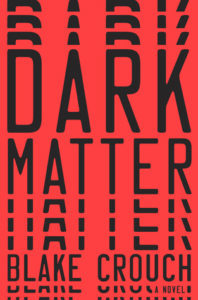 Dark Matter is also the story of a marriage, though the tone is quite different. Whereas Version Control was deliberate and thoughtful, Crouch’s story reads much more like a thriller. Jason Dessen teaches physics at a mid-rate local college in Chicago. He’s married to Daniela, who gave up a promising art career to stay home with their son Charlie, whom she became pregnant with before the two were married. Jason himself gave up a much more lucrative physics career because their son (who was born premature) and his marriage required more time than he could give as a scientist stuck in a clean room for twelve or more hours each day. He often wonders what his life would have been like had he not had to do that; he wonders if Daniela has regrets, too. But overall, he’s happy with his choices.
Dark Matter is also the story of a marriage, though the tone is quite different. Whereas Version Control was deliberate and thoughtful, Crouch’s story reads much more like a thriller. Jason Dessen teaches physics at a mid-rate local college in Chicago. He’s married to Daniela, who gave up a promising art career to stay home with their son Charlie, whom she became pregnant with before the two were married. Jason himself gave up a much more lucrative physics career because their son (who was born premature) and his marriage required more time than he could give as a scientist stuck in a clean room for twelve or more hours each day. He often wonders what his life would have been like had he not had to do that; he wonders if Daniela has regrets, too. But overall, he’s happy with his choices.
Then one day, as he’s driving home, he’s abducted by a masked stranger. He’s knocked out; when he wakes, he’s in an unfamiliar laboratory and the people around him are welcoming him back home. But this world is not his world. He and Daniela never got married. Charlie was never born. People seem to believe he’s a celebrated scientist who won a major award and has been missing for the past eight months. After a brief time believing he may be crazy, Jason figures out he’s actually been forcibly sent to another version of his world, one where he made the choice to break up with Daniela when she became pregnant and pursue his career instead. Crouch shows us that the person who abducted Jason is now inhabiting his own life, sleeping with his wife and raising his son. Original Jason embarks on a journey to get back, no matter how impossible it seems. His love for Daniela drives him, haunting him across the multiverse as he runs into version after version of her.
The major fault I found in Dark Matter was its drawn-out beginning. It took too long for Jason to finally realize he’s not crazy, he’s not in his own world, and there are in fact infinite versions of the world that he now has the ability to travel through. Anyone who’s read any SF will have figured all of these things out long before; this concept is not new to the genre and is a primary reason why many readers will have picked up the book in the first place. While the beginning is interesting in a character sense, it’s once Jason learns the truth that the story really takes off. Crouch’s multiverse is fascinating, and I loved reading about the many different realities – terrible and wonderful and just plain weird – that Jason explores on his journey to find the one where he belongs. About a quarter of the way from the end, the story goes full-on bananas in the best kind of way, and I was worried that Crouch had written himself into a corner. But he found the solution for his characters (the only one possible, really), and the end is supremely satisfying.
Interestingly, the words “abortion” and “rape” are never used. In the world that Jason wakes up in initially, Daniela was pregnant and then she wasn’t. In Jason’s original world, Jason’s abductor is having sex with his wife without her knowledge of who he truly is. I don’t know if these two elisions were a conscious choice on Blake’s part, but they are two more aspects of this book for the reader to unpack.
The common themes between Version Control and Dark Matter are obvious, and they’re ones science fiction is perfectly suited to tackle. Are my choices permanent, or can they be changed? Should I even wish to change the past? Would I have turned out to be the same person I am now had I made a different choice – big or small – five years ago? Fifteen years ago? What is it that makes me uniquely me? How much impact do my choices make upon the rest of the world? Readers will come away from both of these novels pondering these timeless, thorny questions. Both books are highly recommended.
June 4, 2017
On The Radar: June 2017 YA Titles
“On The Radar” is a monthly series meant to highlight between 9 and 12 books per month to fit a budget of roughly $300 or less. These lists are curated from a larger spreadsheet I keep with a running list of titles hitting shelves and are meant to reflect not only the big books coming out from authors readers know and love, but it’s also meant to showcase some of the titles that have hit my radar through review copies, publicity blasts, or because they’re titles that might otherwise not be readily seen or picked up through those traditional avenues. It’s part science and part art.
This month, I’ve picked 12 titles. A number of these are from well-known authors and/or entries into popular series, and a number are from authors whose reputations are either long-lasting or ever-growing (how are those for vague and specific definitions?). I also wanted to include a few titles that might be easier to overlook because of smaller budgets or publicity plans but that would certainly be important additions to a library or classroom collection.
Book descriptions come from Goodreads and reasons for putting on your radar are mine and mine alone! Titles are alphabetical, with pub dates beside them.
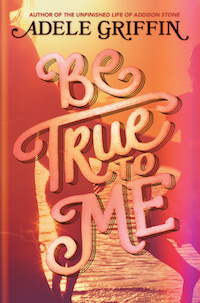 Be True To Me by Adele Griffin (June 13)
Be True To Me by Adele Griffin (June 13)
It’s the summer of 1976 on Fire Island, where feathered hair and the Bicentennial celebration reign. Jean, a sometimes cruel, often insecure, and always envious rich girl, is accustomed to living in her glamorous older sister’s shadow. So when Gil Burke, a handsome newcomer with uncertain ties to one of the most powerful families in the exclusive enclave of Sunken Haven, notices Jean—not her sister—Jean is smitten. Then Fritz, a girl from outside the gilded gates who humiliated Jean in the Island’s tennis championship last year, falls for Gil herself. Soon the girls are competing for much more than a tennis trophy, with higher stakes than either of them can imagine.
Told through the alternating perspectives of Jean and Fritz, as they experience feeling like an outsider and first love.
Why it should be on your radar: Adele Griffin has been writing YA for decades, and a new book from her is a new book worth your shelf space. This one’s a summer-set romance in 1976 on Fire Island and the setting is so fantastically rendered.
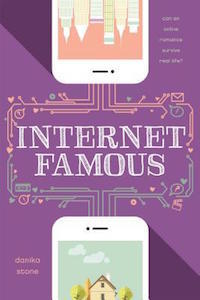 Internet Famous by Danika Stone (June 6)
Internet Famous by Danika Stone (June 6)
High school senior and internet sensation Madison Nakama seems to have it all: a happy family, good grades, and a massive online following for her pop-culture blog. But when her mother suddenly abandons the family, Madi finds herself struggling to keep up with all of her commitments.
Fandom to the rescue! As her online fans band together to help, an online/offline flirtation sparks with Laurent, a French exchange student. Their internet romance—played out in the comments section of her MadLibs blog—attracts the attention of an internet troll who threatens the separation of Madi’s real and online personas. With her carefully constructed life unraveling, Madi must uncover the hacker’s identity before he can do any more damage, or risk losing the people she loves the most… Laurent included.
Why it should be on your radar: Light-hearted fandom-themed novels will be popular for a while. Stone’s first book earned a lot of raves, and I suspect the same will happen here.
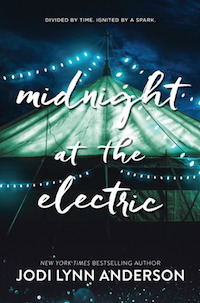 Midnight at the Electric by Jodi Lynn Anderson (June 13)
Midnight at the Electric by Jodi Lynn Anderson (June 13)
Kansas, 2065 Adri has been handpicked to live on Mars. But weeks before Launch, she discovers the journal of a girl who lived in her house over a hundred years ago, and is immediately drawn into the mystery surrounding her fate. While Adri knows she must focus on the mission ahead, she becomes captivated by a life that’s been lost in time…and how it might be inextricably tied to her own.
Oklahoma, 1934 Amidst the fear and uncertainty of the Dust Bowl, Catherine longs for the immortality promised by a professor at a traveling show called The Electric. But as her family’s situation becomes more dire — and the suffocating dust threatens her sister’s life — Catherine must find the courage to sacrifice everything she loves in order to save the one person she loves most.
England, 1919 In the recovery following World War One, Lenore tries to come to terms with her grief for her brother, a fallen British soldier, and plans to sail to America in pursuit of a childhood friend. But even if she makes it that far, will her friend be the person she remembers, and the one who can bring her back to herself?
While their stories spans thousands of miles and multiple generations, Lenore, Catherine, and Adri’s fates are entwined in ways both heartbreaking and hopeful.
Why it should be on your radar: I received a number of review copies of this one, which leads me to believe it’s a big push title. It looks unique and fresh, which only helps.
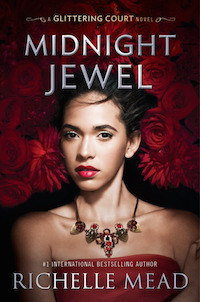 Midnight Jewel by Richelle Mead (June 27)
Midnight Jewel by Richelle Mead (June 27)
A refugee of war, Mira was cast out of her home country and thrust into another, where the conditions were inhospitable at best. In a life-altering twist of fate, she is given the chance to escape once more, and she takes it, joining the Glittering Court.
Both a school and a business venture, the Glittering Court is designed to transform impoverished girls into upper-class ladies who appear destined for powerful and wealthy marriages in the New World. There, Mira finds herself subjected to persecution, not only from her fellow Glittering Court jewels, but from her suitors, as well—men she would potentially be expected to give her life to.
By day, she goes through the motions, learning the etiquette and customs that will help to earn her anonymity, even making a couple true friends in the process, the forthright ladies’ maid Adelaide and the ambitious laundress Tamsin. But by night, Mira hatches a different plan entirely—one that, if exposed, could get her hanged in the highest court of Adoria.
MIDNIGHT JEWEL is the extraordinary story of a girl with few options who courageously forges a new path, finding love, passion, lifelong friendships, and maybe even a way to freedom.
Why it should be on your radar: It’s the second book in Richelle Mead’s new “Glittering Court” series.
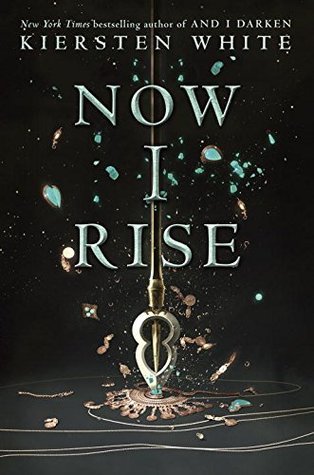 Now I Rise by Kiersten White (June 27)
Now I Rise by Kiersten White (June 27)
Lada Dracul has no allies. No throne. All she has is what she’s always had: herself. After failing to secure the Wallachian throne, Lada is out to punish anyone who dares to cross her blood-strewn path. Filled with a white-hot rage, she storms the countryside with her men, accompanied by her childhood friend Bogdan, terrorizing the land. But brute force isn’t getting Lada what she wants. And thinking of Mehmed brings little comfort to her thorny heart. There’s no time to wonder whether he still thinks about her, even loves her. She left him before he could leave her.
What Lada needs is her younger brother Radu’s subtlety and skill. But Mehmed has sent him to Constantinople—and it’s no diplomatic mission. Mehmed wants control of the city, and Radu has earned an unwanted place as a double-crossing spy behind enemy lines. Radu longs for his sister’s fierce confidence—but for the first time in his life, he rejects her unexpected plea for help. Torn between loyalties to faith, to the Ottomans, and to Mehmed, he knows he owes Lada nothing. If she dies, he could never forgive himself—but if he fails in Constantinople, will Mehmed ever forgive him?
As nations fall around them, the Dracul siblings must decide: what will they sacrifice to fulfill their destinies? Empires will topple, thrones will be won . . . and souls will be lost.
Why it should be on your radar: The next book in Kiersten White’s duology. Her books will always be must-buys for libraries, since she remains wildly popular. This series has also received some good critical acclaim.
 Once and For All by Sarah Dessen (June 6)
Once and For All by Sarah Dessen (June 6)
Louna, daughter of famed wedding planner Natalie Barrett, has seen every sort of wedding: on the beach, at historic mansions, in fancy hotels and clubs. Perhaps that’s why she’s cynical about happily-ever-after endings, especially since her own first love ended tragically. When Louna meets charming, happy-go-lucky serial dater Ambrose, she holds him at arm’s length. But Ambrose isn’t about to be discouraged, now that he’s met the one girl he really wants.
Why it should be on your radar: A new Sarah Dessen is always radar-worthy.
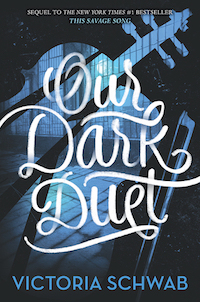 Our Dark Duet by Victoria Schwab (June 13)
Our Dark Duet by Victoria Schwab (June 13)
Kate Harker is a girl who isn’t afraid of the dark. She’s a girl who hunts monsters. And she’s good at it. August Flynn is a monster who can never be human, no matter how much he once yearned for it. He’s a monster with a part to play. And he will play it, no matter the cost.
Nearly six months after Kate and August were first thrown together, the war between the monsters and the humans is terrifying reality. In Verity, August has become the leader he never wished to be, and in Prosperity, Kate has become the ruthless hunter she knew she could be. When a new monster emerges from the shadows—one who feeds on chaos and brings out its victim’s inner demons—it lures Kate home, where she finds more than she bargained for. She’ll face a monster she thought she killed, a boy she thought she knew, and a demon all her own.
Why it should be on your radar: The second of two books in Schwab’s duology will satisfy fans of the series and Schwab’s work more broadly. The first book is in paperback, so if you don’t already own it, pick it up — it was a New York Times bestseller, though, so I suspect it’s already on shelves or in the hands of hungry readers.
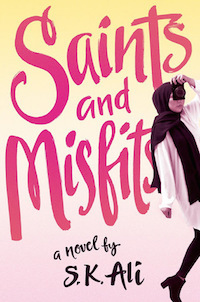 Saints & Misfits by SK Ali (June 13)
Saints & Misfits by SK Ali (June 13)
Saints and Misfits is an unforgettable debut novel that feels like a modern day My So-Called Life…starring a Muslim teen.
How much can you tell about a person just by looking at them?
Janna Yusuf knows a lot of people can’t figure out what to make of her…an Arab Indian-American hijabi teenager who is a Flannery O’Connor obsessed book nerd, aspiring photographer, and sometime graphic novelist is not exactly easy to put into a box.
And Janna suddenly finds herself caring what people think. Or at least what a certain boy named Jeremy thinks. Not that she would ever date him—Muslim girls don’t date. Or they shouldn’t date. Or won’t? Janna is still working all this out.
While her heart might be leading her in one direction, her mind is spinning in others. She is trying to decide what kind of person she wants to be, and what it means to be a saint, a misfit, or a monster. Except she knows a monster…one who happens to be parading around as a saint…Will she be the one to call him out on it? What will people in her tightknit Muslim community think of her then?
Why it should be on your radar: Every single thing about the description sounds great and the cover is outstanding.
 This Impossible Light by Lily Myers (June 6)
This Impossible Light by Lily Myers (June 6)
Sixteen-year-old Ivy’s world is in flux. Her dad has moved out, her mother is withdrawn, her brother is off at college, and her best friend, Anna, has grown distant. Worst of all, Ivy’s body won t stop expanding. She’s getting taller and curvier, with no end in sight. Even her beloved math class offers no clear solution to the imbalanced equation that has become Ivy s life.
Everything feels off-kilter until a skipped meal leads to a boost in confidence and reminds Ivy that her life is her own. If Ivy can just limit what she eats the way her mother seems to she can stop herself from growing, focus on the upcoming math competition, and reclaim control of her life. But when her disordered eating leads to missed opportunities and a devastating health scare, Ivy realizes that she must weigh her mother’s issues against her own, and discover what it means to be a part of and apart from her family.
Why it should be on your radar: Lily is maybe best known for her viral slam poem “Shrinking Woman,” and I have been eagerly awaiting this novel from her for what feels like years. It’s a novel in verse, has earned some critical acclaim already, and it’s comped to Laurie Halse Anderson and Ellen Hopkins. One for your readers who like hard hitting contemporary YA.
Jason Zhou survives in a divided society where the elite use their wealth to buy longer lives. The rich wear special suits, protecting them from the pollution and viruses that plague the city, while those without suffer illness and early deaths. Frustrated by his city’s corruption and still grieving the loss of his mother who died as a result of it, Zhou is determined to change things, no matter the cost.
With the help of his friends, Zhou infiltrates the lives of the wealthy in hopes of destroying the international Jin Corporation from within. Jin Corp not only manufactures the special suits the rich rely on, but they may also be manufacturing the pollution that makes them necessary.
Yet the deeper Zhou delves into this new world of excess and wealth, the more muddled his plans become. And against his better judgment, Zhou finds himself falling for Daiyu, the daughter of Jin Corp’s CEO. Can Zhou save his city without compromising who he is, or destroying his own heart?
Why it should be on your radar: An inclusive scifi adventure duology by an author that many readers may be familiar with? It’s going to do well, and that cover is going to do the book some favors, too.
Lance Hendricks is homeward bound, four hundred highway miles from the best night of his life. There’s an epic graduation party brewing, his girlfriend will be there, and they’ve got a private bedroom with their names on it. When his ’93 Buick breaks down in the middle of nowhere, Lance is sure he’ll be back on the road in no time. After all, he’s the high school valedictorian. First chair trumpet player. Scholarship winner. Nothing can stop Lance Hendricks.
But afternoon turns to night, and Lance ends up stranded at the Trainsong Motel. The place feels ominous, even before there’s a terrible car wreck outside his room. When Lance rushes out to help, the townies take notice. They call him Wildman, and an intriguing local girl asks him to join in their nighttime adventures. He begins to live up to his new name. As one day blurs into the next, Lance finds himself in a bar fight, jumping a train, avoiding the police. Drifting farther from home and closer to a girl who makes him feel a way he’s never felt before—like himself.
Why it should be on your radar: I don’t believe I’ve ever received as many review copies or promo emails about a contemporary debut novel in the years I’ve been doing this. It’s mind boggling how many showed up. This is obviously a huge push title.
June 1, 2017
This Week at Book Riot
Over on Book Riot this week…
#RiotGrams launched for June. If you’re on Instagram or have been considering joining, here’s an opportunity to dive right into the book world.
Stay hydrated with these sweet bookish water bottles and travel mugs.
This week’s “3 On A YA Theme” is all about teens in YA fiction who are obsessed with real life bands.
May 30, 2017
Before the Fall by Noah Hawley
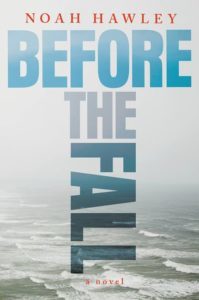 A private plane carrying eleven people crashes in the Atlantic. The only two survivors are Scott Burroughs, a mostly has-been painter, and a four year old boy, the son of a Rupert Murdoch-type media mogul named David Bateman who founded an analog of Fox News. Burroughs swam the several miles to shore while towing the boy and as a result is now a celebrity of sorts. But his celebrity status is wholly unwelcome, as he’s hounded by reporters and his every move is monitored. Soon, perhaps inevitably, he’s targeted by a “journalist” who works at the right-wing television station and begins to insinuate that Burroughs had something to do with the crash.
A private plane carrying eleven people crashes in the Atlantic. The only two survivors are Scott Burroughs, a mostly has-been painter, and a four year old boy, the son of a Rupert Murdoch-type media mogul named David Bateman who founded an analog of Fox News. Burroughs swam the several miles to shore while towing the boy and as a result is now a celebrity of sorts. But his celebrity status is wholly unwelcome, as he’s hounded by reporters and his every move is monitored. Soon, perhaps inevitably, he’s targeted by a “journalist” who works at the right-wing television station and begins to insinuate that Burroughs had something to do with the crash.
Before the Fall follows each of the victims of the plane crash in the years, months, and days preceding the accident. They include each member of the Bateman family (David, his wife, his nine year old daughter, his four year old son), the Batemans’ bodyguard, their friends the Kiplings, Burroughs, and the plane’s crew. Each person had an interesting life, in the way the old British saying “May you live in interesting times” is often interpreted to be a curse. The Batemans’ young daughter was kidnapped (and recovered) as a toddler, the Kiplings were being investigated for money laundering, one of the flight attendants was being routinely harassed, and so on. It’s in illuminating each of their lives that Hawley’s writing shines. I was initially concerned that his depiction of Maggie Bateman, David’s wife, would be the blueprint for how he wrote about all the women in the story (Maggie as a young woman gave up a career as a schoolteacher somewhat reluctantly after marrying David and now all her thoughts are consumed by her children), but I was relieved that this was not the case. The women in the story, as well as the men, are varied, with unique experiences, thought processes, and personalities. Hawley (and the audiobook narrator Robert Petkoff) excel at getting readers deep into their characters’ minds, and reading about their lives only compounds the tragedy of their deaths.
When he’s not chronicling what happened before the fall, Hawley’s story follows Burroughs after the fall, including the way he deals with the reporter hounding him and slandering him on air. This storyline in particular is hugely satisfying and didn’t play out the way I anticipated. Hawley deftly skewers Fox News and its talking heads (Bill O’Reilly comes to mind as a timely analog for the reporter who targets Burroughs here) and highlights the way certain media outlets fabricate the news instead of reporting it. There’s also the added wrinkle of the incredible amount of money the young boy has just inherited, and the book includes a small but fascinating subplot about the boy’s aunt and her husband under whose care he is now placed.
Readers may be disappointed by the ending; the reason for the plane crash is simple and involves only a couple of people out of the many that Hawley’s book follows. This is a very television-esque kind of way to tell a story, and Hawley, who currently writes for tv series Fargo and Legion, is very good at telling it. So even if you’re a fan of novels where all the disparate threads join together into one satisfying tapestry at the end, you’ll likely still be riveted by Hawley’s story, which does precisely the opposite. Perhaps that is the point. People lead complicated, messy lives, and often, their deaths are without purpose. For most of the people on the plane, the crash really was just a tragedy – they were in the wrong place at the wrong time, and their lives had nothing to do with their deaths.
This is a good pick for readers who enjoy character-driven, rather than plot-driven, thrillers.
May 28, 2017
May 2017 Debut YA Novels
It’s time for another round-up of debut YA novels of the month — here’s what we’ve got for May.
This round-up includes debut novels, where “debut” is in its purest definition. These are first-time books by first-time authors. I’m not including books by authors who are using or have used a pseudonym in the past or those who have written in other categories (adult, middle grade, etc.) in the past. Authors who have self-published are not included here either.
All descriptions are from Goodreads, unless otherwise noted; I’ve found Goodreads descriptions to offer better insight to what a book is about over WorldCat. If I’m missing any debuts out in May from traditional publishers — and I should clarify that indie/small presses are okay — let me know in the comments.
As always, not all noted titles included here are necessarily endorsements for those titles. List is arranged alphabetically by title, with pub dates beside them.
When Dimple Met Rishi by Sandhya Menon
Dimple Shah has it all figured out. With graduation behind her, she’s more than ready for a break from her family, from Mamma’s inexplicable obsession with her finding the “Ideal Indian Husband.” Ugh. Dimple knows they must respect her principles on some level, though. If they truly believed she needed a husband right now, they wouldn’t have paid for her to attend a summer program for aspiring web developers…right?
Rishi Patel is a hopeless romantic. So when his parents tell him that his future wife will be attending the same summer program as him—wherein he’ll have to woo her—he’s totally on board. Because as silly as it sounds to most people in his life, Rishi wants to be arranged, believes in the power of tradition, stability, and being a part of something much bigger than himself.
The Shahs and Patels didn’t mean to start turning the wheels on this “suggested arrangement” so early in their children’s lives, but when they noticed them both gravitate toward the same summer program, they figured, Why not?
Dimple and Rishi may think they have each other figured out. But when opposites clash, love works hard to prove itself in the most unexpected ways.
May 25, 2017
This Week at Book Riot
Over on Book Riot this week…
Three practical tips I’ve got to share about The Book Life. Basically, how to pack and move books, how to find inexpensive used and classic books, and how to use your smart phone’s camera to remember things.
For this week’s “3 On A YA Theme,” YA authors shared how they’ve been inspired by Margaret Atwood’s The Handmaid’s Tale.
A look at some of the designated Book Towns around the world. I would like to visit each of these places.
May 23, 2017
Review and Giveaway: 5 Worlds: The Sand Warrior by Mark Siegel and Alexis Siegel
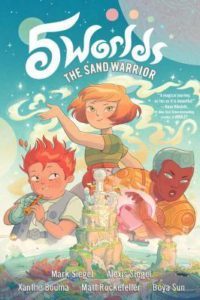 Oona Lee is possibly the worst sand dancer in her whole class, which wouldn’t be such a terrible thing if her older sister, disappeared now for many years, weren’t the best, destined to light five ancient beacons and save the Five Worlds from extinction. But she has talents of her own, ones she brings to bear when she joins forces with An Tzu, a boy from a slum with his own history, and Jax Amboy, the Five Worlds’ greatest Starball player. They all live on Mon Domani, at the center of the Five Worlds, a planet now being threatened by war as well as climate change so dire it could cause mass starvation.
Oona Lee is possibly the worst sand dancer in her whole class, which wouldn’t be such a terrible thing if her older sister, disappeared now for many years, weren’t the best, destined to light five ancient beacons and save the Five Worlds from extinction. But she has talents of her own, ones she brings to bear when she joins forces with An Tzu, a boy from a slum with his own history, and Jax Amboy, the Five Worlds’ greatest Starball player. They all live on Mon Domani, at the center of the Five Worlds, a planet now being threatened by war as well as climate change so dire it could cause mass starvation.
The Sand Warrior is the first book in a new graphic novel series by Mark Siegel and Alexis Siegel, with art by Xanthe Bouma, Matt Rockefeller, and Boya Sun. That’s a lot of cooks in the kitchen for one graphic novel, and it shows in a few ways. The story is fairly complicated for a middle grade graphic novel, and it will take both adults and kids a bit of time to really fall into it. But that’s also part of the joy: the world the Siegels have created is complex, and the story has many moving parts that require more careful attention (or perhaps re-reads) than some readers may be accustomed to. It’s a fantasy lover’s dream, in other words.
Art and story work in tandem to build a multicultural world (or five worlds, really) with a detailed backstory and a unique magic system. Within the pages of this graphic novel you’ll find, for example, some people who are more plant than human, advanced robotic technology that conquers the uncanny valley, and sand castles big enough (and magical enough) for people to live in. It’s a really fun mixture of fantasy and science fiction, with all the creativity and weird names – one of the planets is called Grimbo(E) – that go along with that.
I’m a sucker for full-color art in graphic novels, and the art in The Sand Warrior is gorgeous. Even if readers have a hard time following all the nuances of the story, they’ll be riveted by the detailed landscapes and diverse cast of characters, each of whom is distinct and recognizable from panel to panel. The coloring is beautiful; the three artists work seamlessly together, eschewing the bold colors of a traditional superhero book for a softer but no less vibrant palette.
This should appeal to readers who like Kazu Kibuishi’s Amulet (Kibuishi has blurbed this, and it’s fitting), Faith Erin Hicks’ The Nameless City, and Ben Hatke’s Zita the Spacegirl.
We’re giving away a finished copy of 5 Worlds: The Sand Warrior, courtesy of Random House Children’s Books (who also sent me an unfinished review copy). To enter, fill out this form. I’ll pick a winner in two weeks. US only, please.


